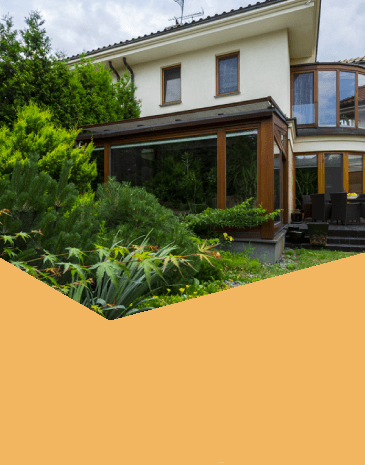

Have you considered enhancing your deck with a balustrade?
Adding a balustrade can not only improve the safety of your deck but also add a touch of elegance, increasing the overall value of your property.
Let’s explore your options.
Timber is a popular choice for residential balustrades, offering a natural and classic aesthetic. Wood types such as oak, pine, or mahogany provide warmth and can be finished with paint or stain to match your decking.
In contrast, metal balustrades, including options such as stainless steel, aluminium, or wrought iron, offer a more modern and durable solution. These materials are often favoured for their strength and low maintenance requirements. Additionally, incorporating glass panels within metal frames can create a sleek, contemporary look while maintaining unobstructed views.
Timber’s inherent charm combines traditional aesthetics with modern sensibilities. Selecting the right timber for your balustrade is crucial for both appearance and longevity.
Options such as oak, pine, and mahogany are prevalent. Each offers unique texture and grain patterns, allowing you to personalise your outdoor space.
Oak is renowned for its durability, making it ideal for outdoor settings.
Proper maintenance is essential: regular sealing and staining will protect your timber balustrade from weathering and preserve its appearance. Choose sustainably sourced timber to ensure environmental responsibility.
Metal balustrades offer a versatile range of options for your decking project. Among the most popular choices are stainless steel, aluminium, and wrought iron.
Finally, wrought iron provides a classic, ornate look that can be customised to intricate designs. When choosing your metal balustrade, consider environmental factors, aesthetic desires, and maintenance requirements to ensure the longevity and beauty of your decking space.
There are numerous glass variants available to suit different design aesthetics and functional needs, including toughened glass, laminated glass, and frosted glass. Toughened glass is particularly favoured for its exceptional strength and safety, being up to five times stronger than regular glass.
Frosted glass variants offer a balance between privacy and light transmission, making them ideal for residential areas where seclusion is desired without compromising the aesthetic allure. When selecting glass variants for your balustrade, consider factors such as safety, functionality, and the desired level of transparency to create a harmonious and secure outdoor space.
When planning a balustrade for your decking, consider factors such as material choice, style compatibility with existing architecture, and the balance between aesthetics and functionality. It is crucial to assess how these elements work together to enhance both safety and visual appeal.
Lighting can profoundly influence the deck’s ambiance, making rail and post illumination popular. Additionally, consider local building regulations to ensure compliance and maintain structural integrity.
Balustrades serve both form and function.
Aesthetic styles play a pivotal role in defining a deck’s overall appeal. The right balustrade can enhance the visual connection to your surrounding landscape, while also complementing the architectural vernacular of the property. Consequently, careful consideration must be given to the selection of materials and design motifs to ensure seamless integration.
To ensure the safety and compliance of your decking balustrade, adherence to stringent safety regulations is imperative across the United Kingdom.
The height of balustrades in residential properties must be at least 1 metre.
Moreover, balustrade openings should prevent passage of a 100mm sphere.
For strength, structural testing must ensure resistance to applied loads.
Handrails, where applicable, must be between 900mm and 1100mm from the deck surface, providing stability and support.
Lastly, materials must conform to fire safety regulations, particularly for high-rise buildings, to mitigate any potential hazards.
The installation of a decking balustrade is a meticulous procedure, requiring thorough preparation, precise measurement, and expert execution. Initially, place and secure the posts to establish the framework, ensuring optimal spacing for maximum support. Follow with the attachment of the individual balustrade panels, aligning each section meticulously to create a uniformly secure structure. The final steps involve securing the handrails and performing a comprehensive inspection to confirm the integrity of the installation. Each phase must be executed with precision to ensure durability, safety, and compliance with regulatory standards.
Installing a balustrade for your decking can seem daunting, but following a systematic approach simplifies the task.
Following these steps ensures a safe and aesthetically pleasing balustrade installation.
Routine care is paramount to extending the lifespan of your balustrade. Regularly inspect the structure for any signs of wear, such as rust or loose components, especially after severe weather. Cleaning the balustrade with suitable, non-abrasive cleaners helps preserve its finish. For timber balustrades, consider annual treatments with protective oils or sealants to maintain their resistance to the elements. In the case of glass balustrades, ensure the fittings are tightly secured, and use a soft cloth with a mild solution to prevent scratches. Prioritising these maintenance practices will keep your balustrade safe and visually appealing for years to come.
Different materials will require specific cleaning methods. For example, stainless steel balustrades can benefit from simple soap and water, but avoid using abrasive cleaners as they can scratch the surface. Conversely, wooden balustrades need gentle cleaning with a damp cloth and occasional resealing to protect from moisture.
Properly maintained balustrades not only look aesthetically pleasing but also ensure structural integrity. Routine cleaning, along with meticulous attention to appropriate methods for each material, can significantly extend the longevity and appearance of your balustrade.
Balustrades, like all structural elements, require periodic maintenance to ensure their safety and longevity.
In instances where minor wear is observed, such as small cracks or loose fittings, simple repairs can often be undertaken. These might include tightening bolts, replacing screws, or applying wood filler in the case of wooden balustrades.
Prompt attention to repair needs helps prevent minor issues from escalating into major structural problems.